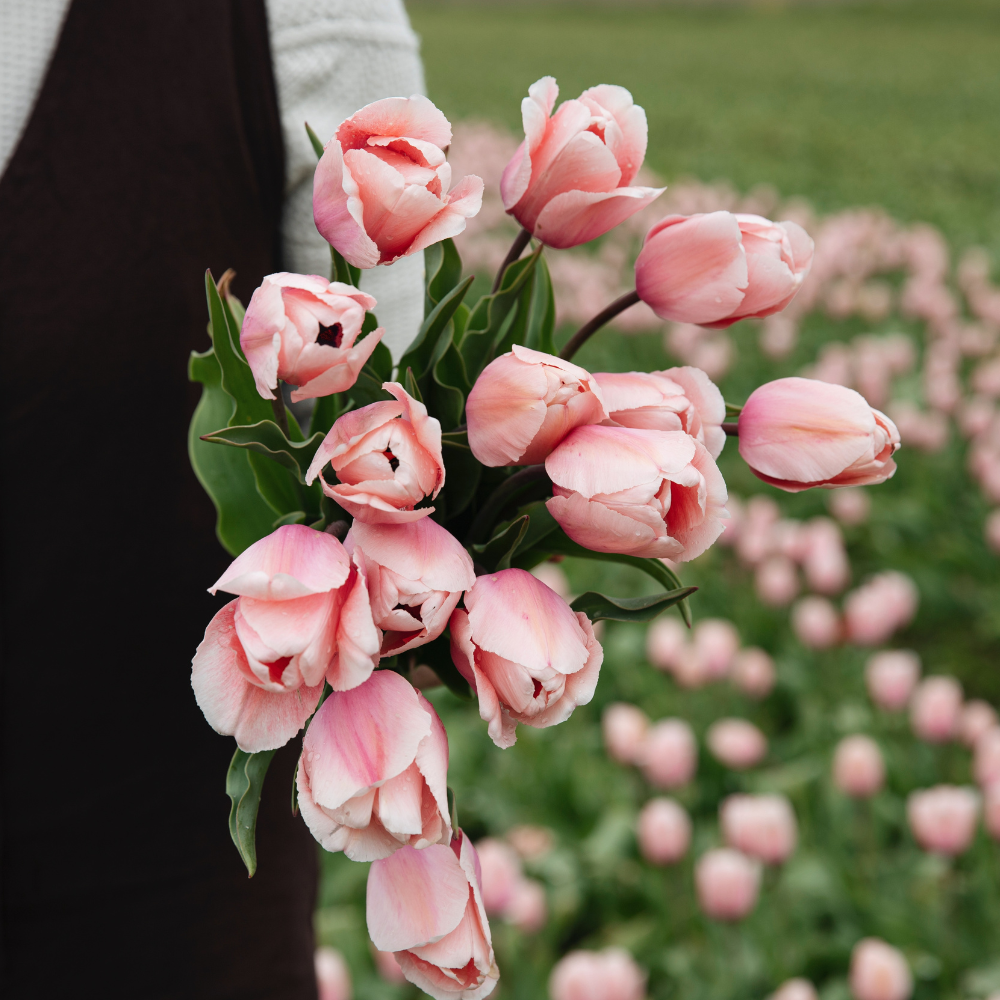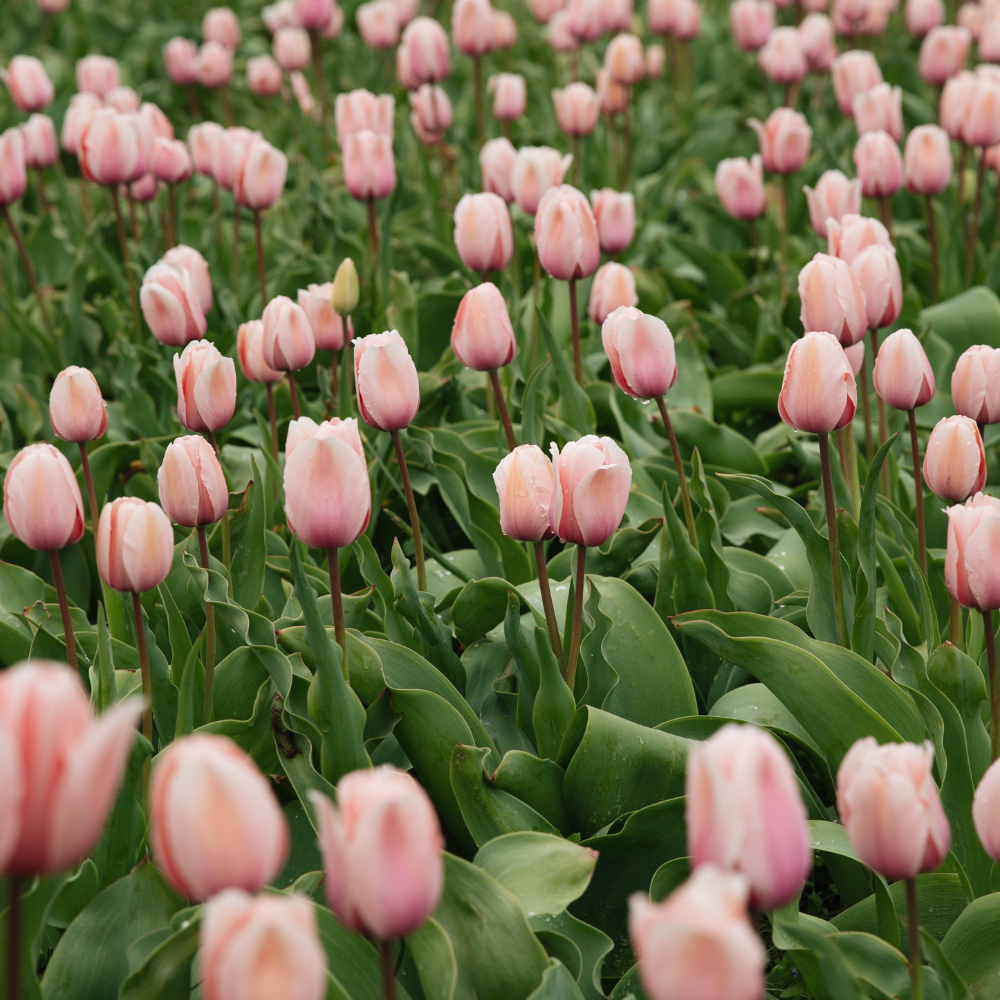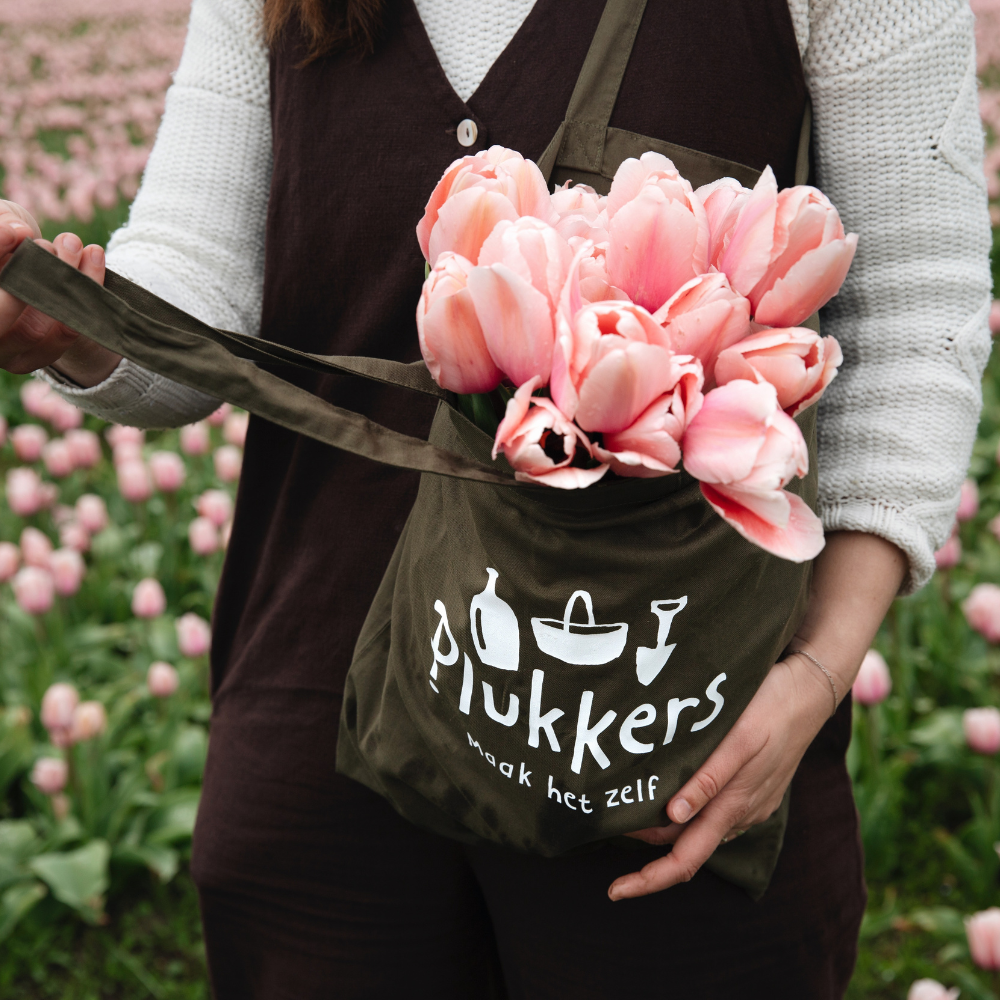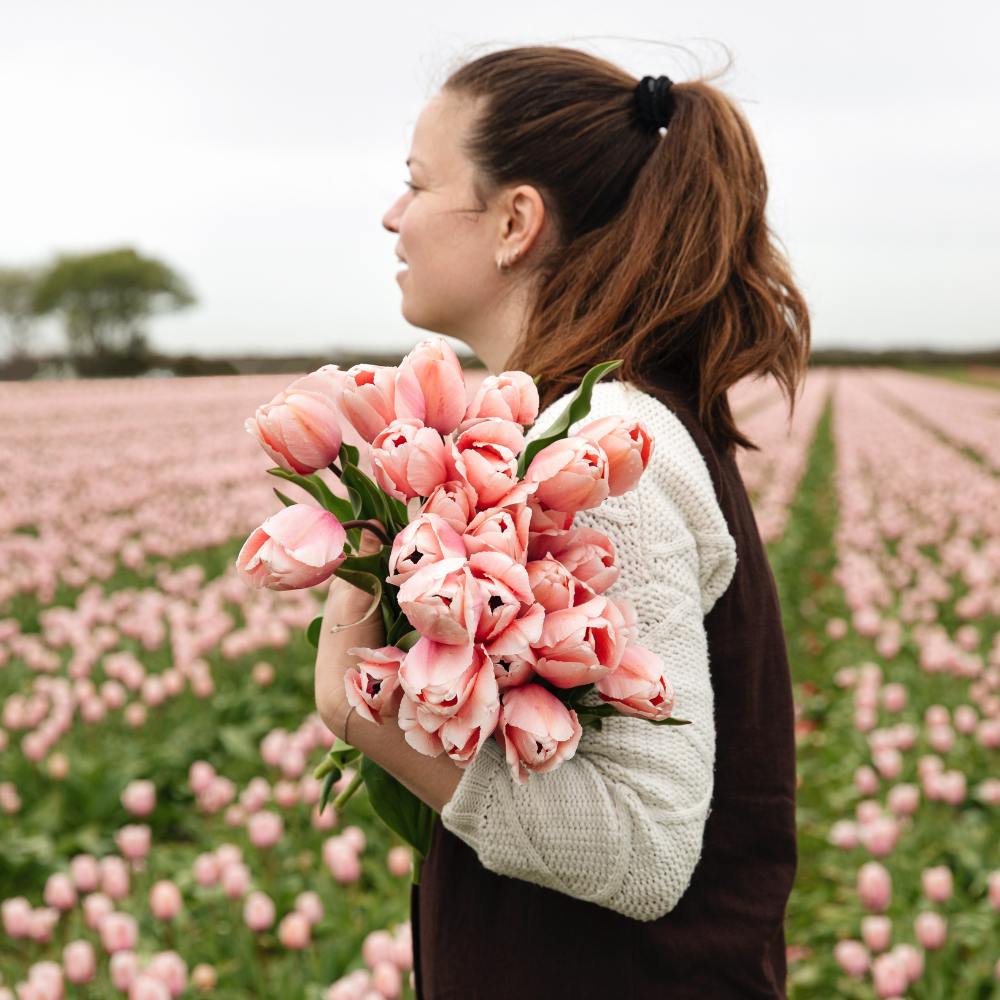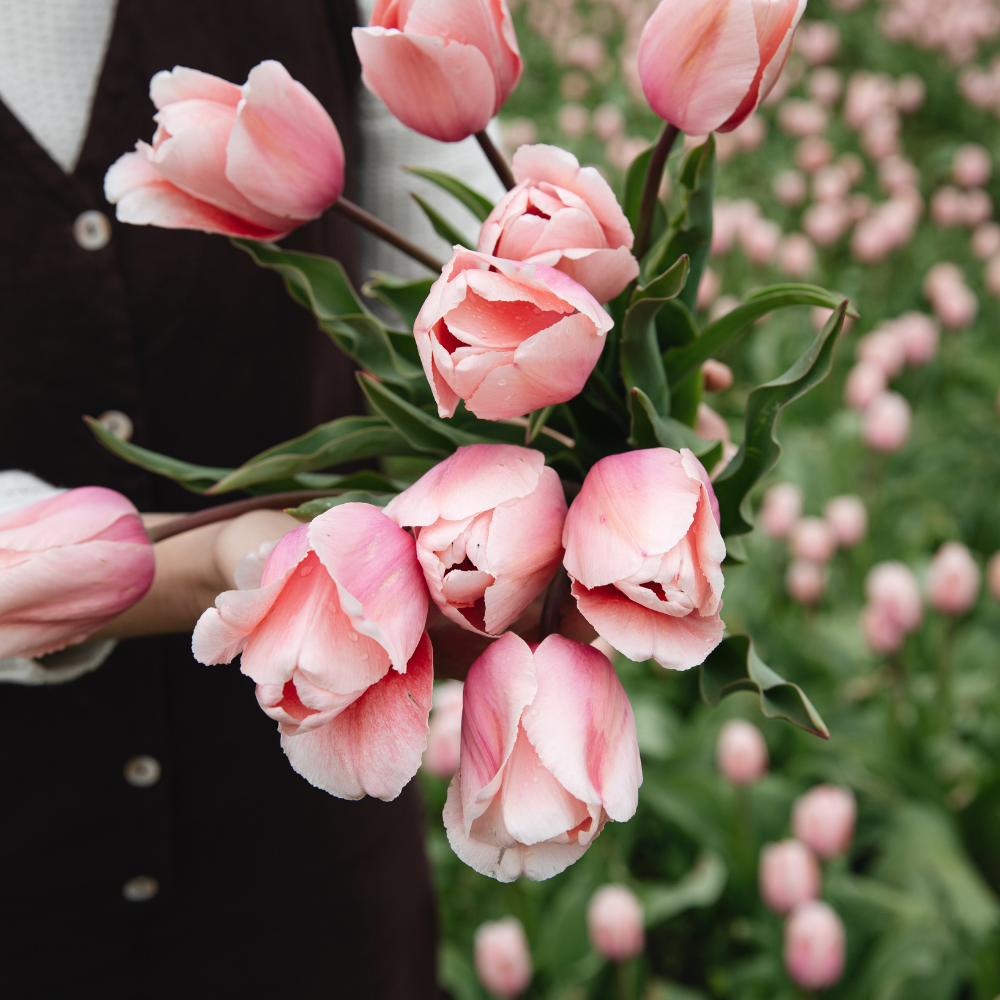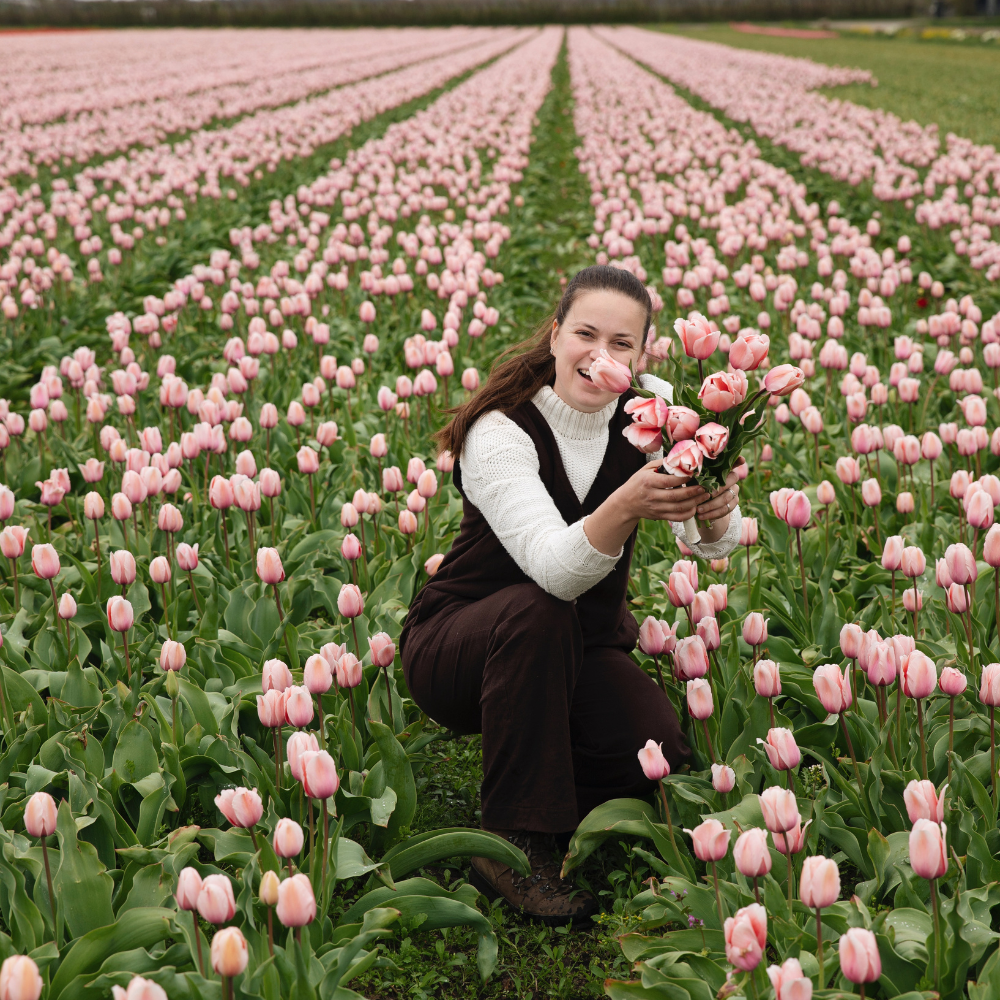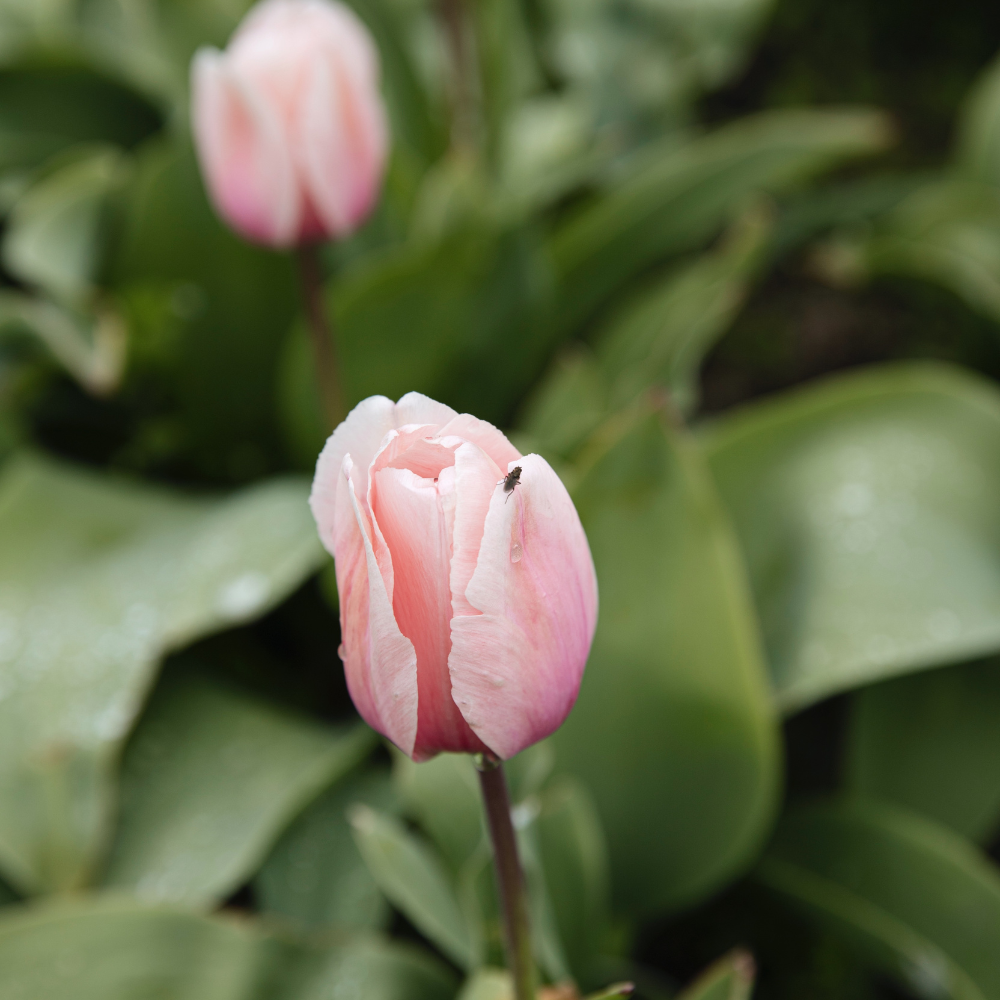Salmon pink softness with an impressive appearance
The Salmon Impression tulip combines soft, salmon-pink hues with an impressive size. This Darwin hybrid blooms profusely in early spring and is beloved for its elegant, large flowers on sturdy stems.
Why choose Salmon Impression?
- Large flowers in warm salmon pink with a soft glow
- Early bloomer – provides a colorful start to the season
- Robust Darwin hybrid – reliable and wind-resistant
- Long stems, ideal as a cut flower for a classic bouquet
- Brings peace, charm and a touch of romance to your garden
Planting instructions:
Plant the bulbs in the fall (October–December) about 10 cm deep and 10-15 cm apart. They thrive in the ground or in pots. Allow the foliage to die back slowly after flowering to ensure healthy bulbs the following year.
- Biologisch
- Yes
- Standplaats
- Partial shade Sun
- Planttijd
- October November December
- Oogst- en bloeitijd
- April May
- Plantafstand
- 10 cm
- Hoogte
- 40-50 cm
Dispatch
Dispatch
We ship your order within 1-2 business days*. When you spend €75,- you get one free shipment. Shipping is possible from €3.95. All orders are shipped as a package with a track and trace code, so you can always follow your order. Read more about the shipping costs in our FAQ.
Delivery time pre-order
Your order will be shipped from the indicated availability date. This also applies if you combine pre-order with products that are already in stock.
*Please note: In some cases this is not the case, such as: pre-orders, chicory roots, trees and small fruit. Read more in our FAQ.
Huiberts Organic Flower Bulbs
Huiberts Organic Flower Bulbs
Pioneer in organic bulbs
John and Johanna Huiberts are pioneers in organic flower bulb cultivation. Where they once worked with chemical agents, they consciously chose a different path around 2010. They immersed themselves in soil biology and switched completely to natural cultivation. They now grow around 15 million organic flower bulbs annually on 75 hectares, without artificial fertilizers or poison.
The result? A living soil full of worms, insects and fungi. Water is better absorbed, pests have less chance, and birds help in the ecosystem.
Did you know that only 0.24% of all flower bulbs in the Netherlands are grown organically? By choosing a flower bulb from Huiberts, you consciously choose biodiversity, future-proof agriculture and a bulb that has grown with the help of nature - not at its expense.
Planting bulbs
Planting bulbs
Plant flower bulbs in the fall, between October and December, and make sure they go into the ground before the first frost. Then they get enough cold to flower well and time to make strong roots.
Dig a hole two to three times as deep as the bulb is high (usually about 10–15 cm). Depth is important: it protects the bulb from frost, prevents it from drying out and ensures strong stems. Place the bulbs with the point upwards and leave some space between each bulb. Cover them with soil and water if it remains dry for a long time.
Bulbs in pot
Bulbs in pot
Flower bulbs are not just for the garden – they also do very well in pots. Depending on the size of the pot, you can use almost all types of flower bulbs. Make sure you use a pot with a hole in the bottom, so that excess water can drain away properly. Bulbs do not like wet feet: if they are too wet in the winter, they can rot and grow poorly.
For a long flowering period, you can make a so-called 'bulb lasagna': plant in layers, with late flowering species (such as tulips) at the bottom, mid-season flowering species (such as daffodils) above them, and the earliest flowering species (such as crocuses) on top. In a pot, you can plant the bulbs closer together than in the open ground - that ensures a full, exuberant flowering. Place the pot in a cool place outside, and protect it from severe frost with bubble wrap or jute.
With a few well-planted pots you can bring spring to your balcony, terrace or windowsill.
Do you leave your flower bulbs or do you harvest them with the bulb?
Do you leave your flower bulbs or do you harvest them with the bulb?
Flowers from flower bulbs can be used in two ways: you can leave them in the ground so that they (possibly) come back, or you can harvest them with the bulb and all for a vase or bouquet. Both options have their charm – it depends on the type and your plans for the garden.
If you leave the bulbs in the ground, it is important to let the foliage die off slowly. This allows the bulb to store energy for a new bloom. However: not all flower bulbs come back every year. Botanical tulips, daffodils, blue grape hyacinths and ornamental onions are good examples of species that you can have come back year after year with a little care. Many large tulip varieties (such as double or fringed tulips) on the other hand are often less reliable as permanent returners - they give the best result in the first year.
If you harvest your flowers with bulb and all, you will get an extra long vase life and a special, natural look. Ideal for picking gardens or field bouquets. Keep in mind that you remove the bulb and therefore have one flowering.
If you want to enjoy your bulbs for a long time, choose varieties that are suitable for naturalising – and give them a spot where they can quietly do their thing.

